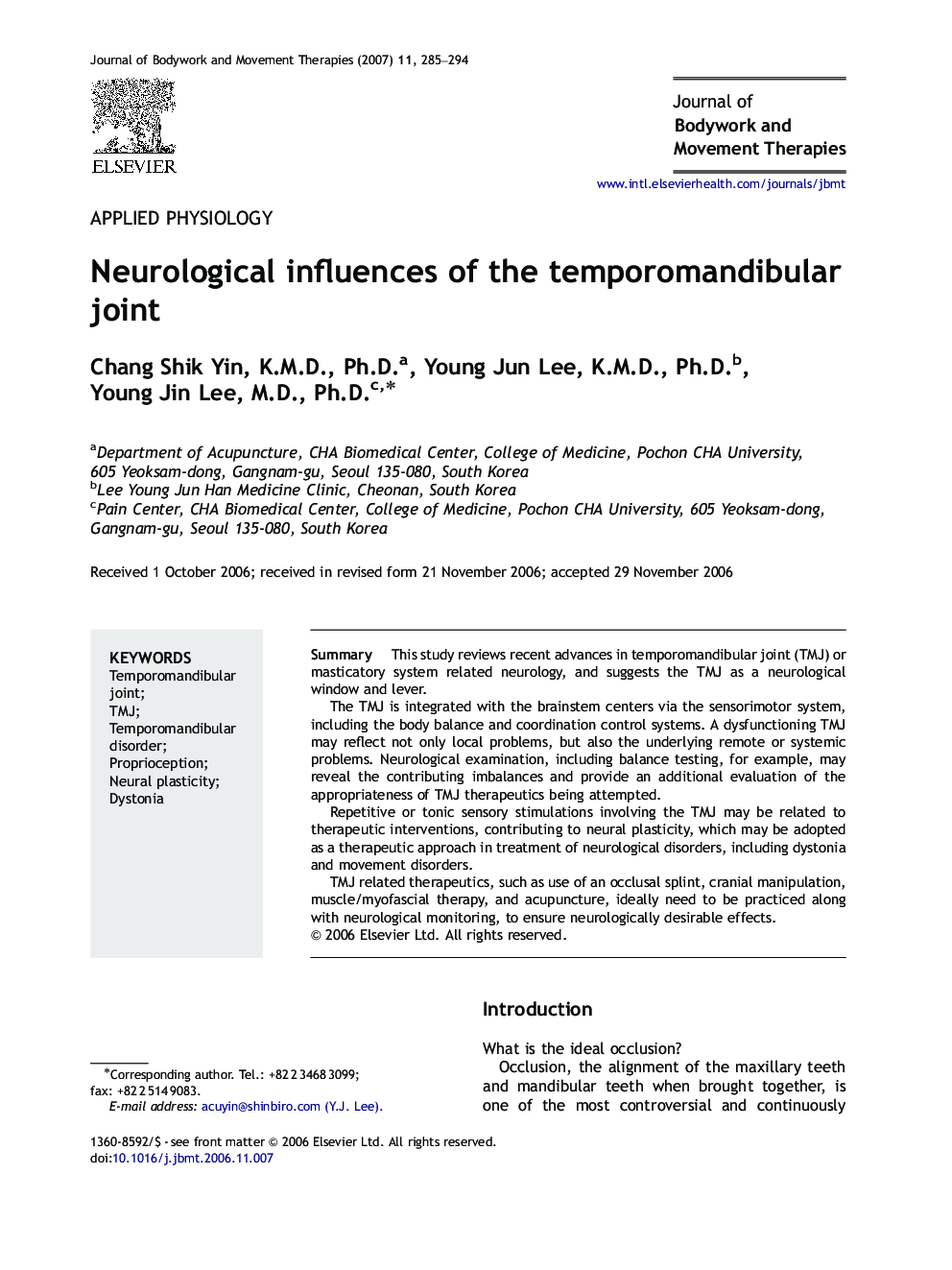| Article ID | Journal | Published Year | Pages | File Type |
|---|---|---|---|---|
| 2618871 | Journal of Bodywork and Movement Therapies | 2007 | 10 Pages |
SummaryThis study reviews recent advances in temporomandibular joint (TMJ) or masticatory system related neurology, and suggests the TMJ as a neurological window and lever.The TMJ is integrated with the brainstem centers via the sensorimotor system, including the body balance and coordination control systems. A dysfunctioning TMJ may reflect not only local problems, but also the underlying remote or systemic problems. Neurological examination, including balance testing, for example, may reveal the contributing imbalances and provide an additional evaluation of the appropriateness of TMJ therapeutics being attempted.Repetitive or tonic sensory stimulations involving the TMJ may be related to therapeutic interventions, contributing to neural plasticity, which may be adopted as a therapeutic approach in treatment of neurological disorders, including dystonia and movement disorders.TMJ related therapeutics, such as use of an occlusal splint, cranial manipulation, muscle/myofascial therapy, and acupuncture, ideally need to be practiced along with neurological monitoring, to ensure neurologically desirable effects.
